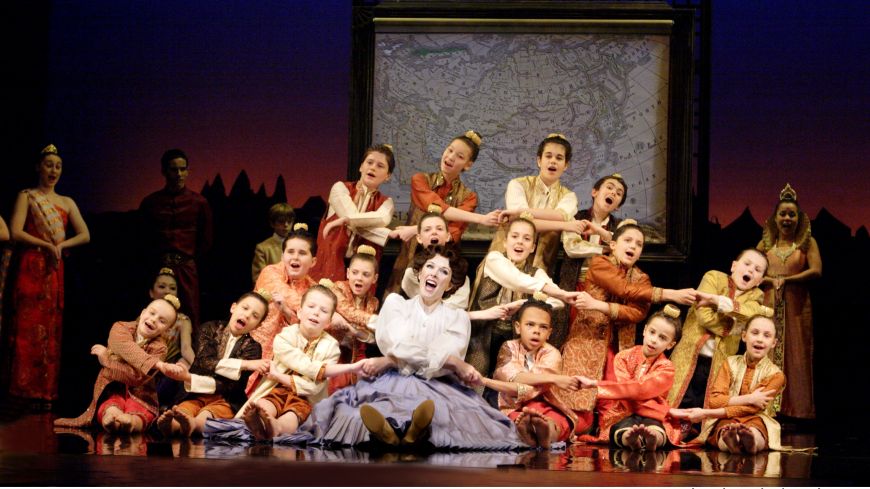
First staged in 1951, Rogers and Hammerstein “The King and I” is based on Margaret Landon's novel, “Anna and the King of Siam”, which was inspired by two volumes of memories of Anna Leonowens, “The English Governess at the Siamese Court” and “Romance of the Harem.”
With a similar narrative to “The Sound of Music” (about a governess caring for a large family of children), this musical is also based on a true love story. In 1862, Anna, a widowed British school teacher, arrives at the Royal Palace Bangkok with her son Louis, to take up the position as the tutor to King Mongkut's 39 wives and 82 children. For practical reasons, in adapting the story for the stage, there are just nine wives and sixteen children!
The King retains strict rules of obedience in his court where everyone must bow and kneel before him, and he willingly accepts a slave girl Tup-tim as a gift from the King of Burma. Anna is at first astounded that she must live in the palace and treated like a servant. While such ancient royal Siamese customs are paramount, he believes his extensive family, especially his heir, Prince Chululongkorn should have a modern education with a knowledge of secular science.
What ensues is a conflict between Eastern and Western cultures and sexual politics. The King’s patriarchal and at times brutal and insensitive attitude to women creates a battle of wills when he comes up against the strong-minded, social activist Anna, whom he sees as “a difficult woman.” Concerned to hear that he has been described as a Barbarian by the British government, she persuades him to try to understand and respect the values of a modern civilised society.
Anna instructs the royal children and the King's harem of wives in the wonders of science, evolution, climate, snow and ice, and she shows where Siam is located on a world map. The King is genuinely astonished to see how small the country actually is in comparison to the vast continents across the globe. Anna is not only educating the children but the King himself. He reads the Bible, learns about the abolition of slavery in the USA, and wants to speak better English: he relishes the expression “etcetera, etcetera”, which he repeats with great delight.
The oriental stage setting is lush and lavish, dominated by two giant golden Buddhas, amidst a series of quick changing scenes around the palace and gardens, with a display of rich furnishings, drapes, flowers, lanterns and colourful silk ball gowns.
The ten piece orchestra plays the vivacious score with bright, foot tapping tempo which includes all the well known songs such as "I Whistle A Happy Tune", "Hello Young Lovers", "Getting To Know You", "Something Wonderful" and "Shall We Dance?"
In the central roles, Ramon Tikaram portrays the King with a blend of arrogant, majestic swagger and gentle charisma, while the elegant Josefina Gabrielle plays the feisty yet feminine Anna with effervescent sparkle and wit; she is reminiscent of Julie Andrews in the purity of her diction and voice. Edinburgh schoolboy Toby Hughes (who shares the role of Louis) gives a most assured, confident performance.
With neat choreography, acrobatics, dazzling duets, and a talented team of locally cast children, this is a spectacular show for all ages. Sixty years since its premiere in London, this fresh and ambitious new production is performed with lighthearted humour, oodles of romantic charm and Broadway pizzazz.
Show runs til 7 January

